Dictionary Dig: Big Words, Big Concepts, Big Time
Click on the highlighted words to discover more!
Alluvium: sediment (mud, sand, gravel, etc.) deposited by a stream or river.
Anthropology: study of the origin, the behavior, and the physical and cultural development of humans.
Aquifer: underground layer of earth, gravel, or porous stone that can store water. The Edwards Aquifer, one of the largest artesian aquifers in the world, lies underneath San Antonio and the Richard Beene site.
Archaic: period of time between 10,000 to 1,200 years ago when people began to become less mobile, as populations increased. Archaic peoples had less territory (area) in which to look for food because there were more and more people through time. This meant less and less "open" space. Hemmed in with more mouths to feed, Archaic peoples learned to use more natural resources, from rats to roots to bugs. In some areas of North America, this increased sedentism led to the domestication of plants and the beginning of agriculture and settled village life.
Archeology: scientific study of the human past through the things left behind by humans.
Artifact: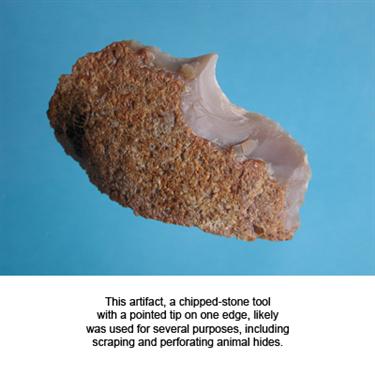 something made or used by a person in the past.
something made or used by a person in the past.
Bedrock: solid rock below soil layers, rivers, and plants. In some locations bedrock is exposed at the Earth's surface.
solid rock below soil layers, rivers, and plants. In some locations bedrock is exposed at the Earth's surface.
Colluvium: loose sediment that has been moved downward from the top or sides of a hill by rain or erosion.
Epoch: unit of geological time that is a division of a geological period.
unit of geological time that is a division of a geological period.
Fauna: all the animals of a particular region or time period, considered as a group. For example, the fauna of south Texas in prehistoric times included pronghorn antelope and bison as well as white-tailed deer, rabbits, and many other animals, from frogs to fish.
all the animals of a particular region or time period, considered as a group. For example, the fauna of south Texas in prehistoric times included pronghorn antelope and bison as well as white-tailed deer, rabbits, and many other animals, from frogs to fish.
Floodplain:
the low, flat plain or valley floor bordering a river. Floodplains are subject to flooding.
Flora: all the plants of a particular region or time period.
Geology: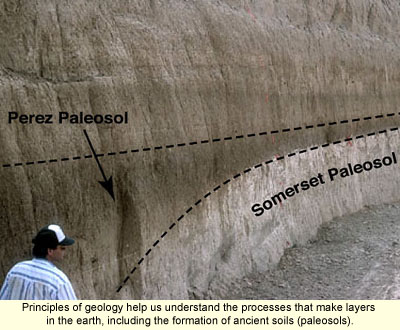
the scientific study of the history and structure of the earth and its rocks and minerals. Archeologists use methods and techniques from geology to learn about the sites and environments in which ancient people lived.
Historic Period: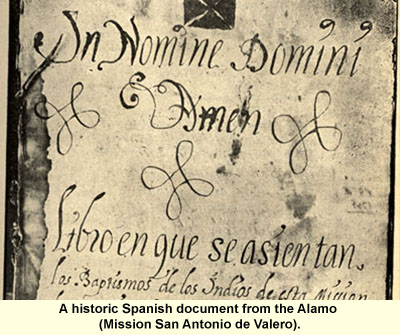
the period of history covered by written records. In Texas, the historic period began in the mid-1500s with the coming of the first Spanish explorers.
Holocene: the geologic time period beginning about 11,000 years ago at the end of the last Ice Age and characterized by the development of human civilizations.
Hunters & Gatherers: groups that support themselves by hunting and fishing and by gathering wild fruits and vegetables. Hunters and gatherers are usually nomadic. For most of human history, people hunted animals and gathered plants in the wild, instead of growing crops or raising animals such as cattle. They did not have grocery stores for food or hardware stores for tools as we do today. In some countries, people such as some Australian Aborigines still practice a hunting and gathering lifestyle.
groups that support themselves by hunting and fishing and by gathering wild fruits and vegetables. Hunters and gatherers are usually nomadic. For most of human history, people hunted animals and gathered plants in the wild, instead of growing crops or raising animals such as cattle. They did not have grocery stores for food or hardware stores for tools as we do today. In some countries, people such as some Australian Aborigines still practice a hunting and gathering lifestyle.
Millennium: a time span of 1,000 years.
Pleistocene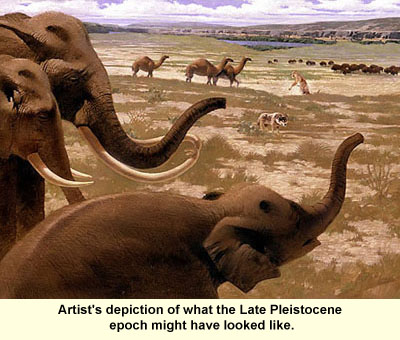 : from 1.8 million to eleven thousand (11,000) years ago, when glaciers covered much of the northern hemisphere (last major ice age). During this time, many animals lived that are now extinct. These include wooly mammoths, saber tooth cats, and giant sloths.
: from 1.8 million to eleven thousand (11,000) years ago, when glaciers covered much of the northern hemisphere (last major ice age). During this time, many animals lived that are now extinct. These include wooly mammoths, saber tooth cats, and giant sloths.
Reservoir: natural or artificial (human made) pond or lake used for the storage and regulation of water.
Sediment: particles formed by the weathering or breakdown of rocks, by the decay of organisms such as plants and animals, or by chemical reactions in water. Sediment particles, such as sand and clay, are carried by wind, water, or ice. For example, streams deposit sediments in floodplains.
Sedimentary rock: a rock formed from the accumulation and combining of sediment, usually in layered deposits, such as limestone and sandstone.
Silt: very fine particles of earth usually deposited by running or standing water.
Stratum: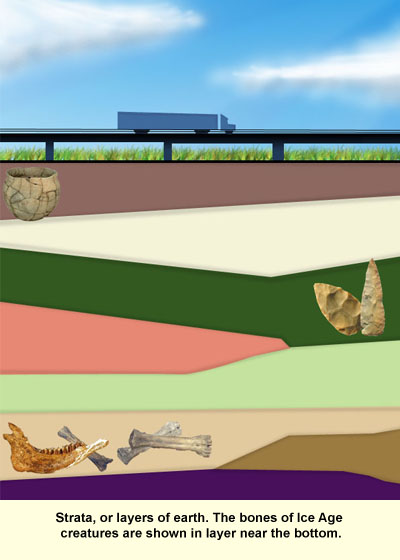 a natural or human-made layer, or deposit. Archeologists study layers of soil and sediments. Geologists study layers of rock. (Each layer is called a stratum. Two or more layers are called strata.)
a natural or human-made layer, or deposit. Archeologists study layers of soil and sediments. Geologists study layers of rock. (Each layer is called a stratum. Two or more layers are called strata.)
Stratigraphy: study of the natural and cultural layers that make up an archeological site. Archeologists study these layers to understand how the site was formed, including flood deposits, ancient camp litter, and wind-blown sand. Generally, younger layers are deposited on top of older layers. In geology, stratigraphy is the study of layers of rock, including their geographic extent, age, classification, characteristics and formation.
Trinomial: a designation consisting of three parts: state designation (Texas is 41), county designation , and the inividual site number. Archeologists use a trinomial to distinguish sites, such as 41BX831, the Richard Beene site (BX= Bexar County).
